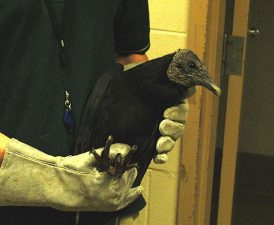 Jennifer C. Daniels is a visionary and artist in Florida who poses a good question for the world today — can farms and cities intersect in this modern world? Much of what she discusses applies to life in the Middle East as well.
Jennifer C. Daniels is a visionary and artist in Florida who poses a good question for the world today — can farms and cities intersect in this modern world? Much of what she discusses applies to life in the Middle East as well.
“The increase of population – a strong argument for urban living – has required 1.2 acres of farmland per average person (to sustain dietary requirements),” she says.
“In addition, the equivalent to 1 acre is lost per person increase in population. This consumption of land will result in the devastation of arable land by 2050.
What is the resolution? Can farm and city intersect? Can there be efficiency in this intersection?”
“The categorization of the program is not efficient unless each category can co-exist symbiotically. Two programs of function have fluctuated severely in opposing trends: agriculture and technology. By the 2050, the ratio of arable land to population for the U.S. alone will be a third of what they were at the beginning of the century. This will have a severe impact on the landscape and diplomacy of programs.”
So she proposes a field project as a thought experiment, noting: “The city as a field project explores the compacting capabilities of a city. The very nature of an urban environment pushes the limits of density and necessity. Through its evolution, the city will be required to understand the limits of space, and re-determine its value and function.
“Through advanced developments in technology, plants will grow at a high efficiency rate, with little demand on resources. Through the use of hydroponic gardening, crops can grow up to 10 times the volume per space at the beginning of the 21st century. This method needs to be exploited as a means to limit space as our main resource.”
Through the use of stacked hydroponic gardening, algae will opportunistically grow underneath each layer from build-up of water, carbon dioxide, minerals and light. The algae will then be harvested to produce much needed biofuel for the city. The amount of algae needed to equal the amount of diesel consumed in the United States is equal to 0.5% of the farm land used in the country.
By 2050, algae will be required to provide most, if not all, of all fuel consumed, and will be economically resilient.”
Algae-for-fuel projects of Seambiotic and of Isaac Berzin’s project in Arizona (read this background story here on MSNBC) are becoming a viable source of fuel. Algae in city farms? Why not?
For details contact Daniels at her website.




4 thoughts on “Jennifer C. Daniels Asks if Farming and City Intersect in the Middle East?”
Comments are closed.